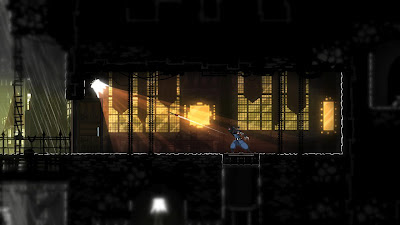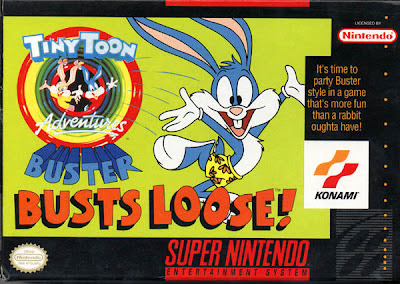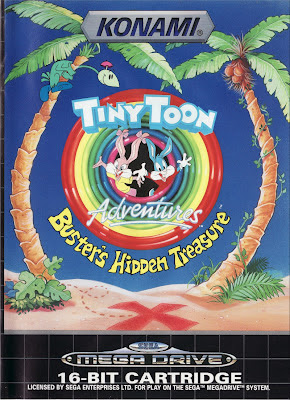The Short
Pros
- Excellent, empowering 2D stealth game
- Wide variety of options lets you be both deadly an silent (hur hur)
- Multiple scenarios and suits let you play as either a killer or a pacifist
- Story is told through awesome cutscenes, and actually has a pretty cool twist
- Perfectly paced, structured, and balanced
- Challenges on each level add another level of excitement
- Liberal checkpoints mean the game is never overly frustrating
- Beautiful graphics
Cons
- Story itself isn't particularly thrilling or engrossing
- A few cheap enemies
- "Scoring" system feels out of place
- Ends too soon, but the New Game + mode helps rectify this
 |
| Can you spot the ninja in this picture? Of course not. |
The Long
I must confess: I love the idea behind stealth games, but I have yet to play very many that I actually enjoyed. The Metal Gear Solid games have a bit of their own thing going for them, and while you can learn the mechanics it still had that "fail and reload a checkpoint two years back" thing. Deus Ex: Human Revolution was the same way: play for stealth, but if you screw up once you're totally jumping back fifteen minutes. Honestly, I can only say the old Tenchu game on the PS1 as well as the older Thief games really stuck out to me as fun stealth gameplay. Mostly the issues lies in something simple: it's hard to determine when someone will see you and when they don't. And if the game screws up that, the whole stealth element sucks.
Luckily, Mark of the Ninja doesn't fall into this trap. In fact, the only ones that are going to fall into traps are the bad guys. Ninja death traps. Because, even to a stealth game snob like myself, Mark of the Ninja is pretty dang close to being perfect. It is easily the best game I've played that made me actually feel like I was a badass ninja of the night. And that's saying something.
 |
| The spider and the fly. |
Mark of the Ninja tells a story of a ninja clan that is the last of its kind, hidden away in modern society. That is, until a bunch of jerks with guns and lights show up and start gunning them all down. You play as some sort of uber-ninja, marked with a mystical red paint taken from ground up magic flowers. These give you some crazy ninja powers (mostly just so the game can give a plausible reason as to how you can see soundwaves of footsteps and use psychic powers to see through walls), but also drive you insane, leading to hallucinations and other nasty things. Point being: this is gonna be your last mission, one way or another.
As a story goes it's told through beautiful cutscenes (these are the dudes who did Shank, after all), but the story itself isn't really that compelling. It does have a pretty clever (if a little predictable) twist at the end, as well as two endings, though both are unsatisfying. Either way, the story is unimportant, because the real joy of Mark of the Ninja is spent lurking through its vents, suspended from its ceilings, and luring guards with the corpses of other guards only to grab them and string them up from a lightpost.
 |
| This game's sense of style is fantastic, if the game is REALLY dark. |
Where Mark of the Ninja works is in its absolutely perfect stealth gameplay. Each level is basically a massive map, with buildings filled with rooms, vents, lights, and doors to traverse. The game guides you to objectives, but never blatantly tells you where to go. In most games the concept of "multiple paths" usually just ends up being one or two scripted alternatives, but in Mark of the Ninja there are really dozens of ways to approach each issue. I remember being stuck in one room at the very end of the game. Try as I might, I just couldn't sneak past this room of snipers and an invincible big dude. After several tries I realized I could actually climb outside the skyscraper, scale the whole building, and sneak in through completely the other side through a vent and assassinate that stupid sniper who had caused me so many problems. Could I have done it the other way? Possibly. There were about four I could see just in the room itself. But the fact the option was there and worked so well really sold me on this game's linear yet nonlinear style of gameplay.
This sense of being a badass ninja is presented to you right from the start with the game's way of showing you everything you need to know right in the world. Most stealth games just sort of throw you into a room, letting you figure out what the field of vision is (or isn't) for enemies and hoping for the best. Mark of the Ninja, however, knows what makes stealth games frustrating and avoids it completely. All guards have a very obvious line of sight in front of their face, which is extended when they search with a flashlight. If you are hidden in the shadows your ninja will be black and blend in, while when visible his colors change dramatically. You have actual field of vision, too: you'll only see based on the direction your ninja is facing and what is available. If he loses sight of an enemy a slight mark will appear where he was last spotted, but you can also see sound waves, so you can watch his footsteps and know exactly when to pop out and nab him. Sound waves play a key role in the game, actually, as you can distract, bait, and see enemies almost better with sound than actual vision.
 |
| Lights are your enemy, but the sound of them shattering can be a great distraction. |
The game trickles in this information at a near perfect clip. The first level is essentially a tutorial, but not a boring one. You learn how free you are to traverse, how you have a plethora of ways to distract people, and how killing is easy but not necessary. You also learn how fragile you are: remember in Batman: Arkham Asylum where if you screwed up you didn't last long? Well, double that for Mark of the Ninja: a few well placed bullets and you are done. This adds even more incentive to be sneaky, and makes the kills all the more satisfying. I really felt awesome when I managed to evade a pair of snipers, swing around the ceiling behind them, distract them by breaking the lights above their heads with bamboo knives, and stab both in the back. It's incredible how smooth it all is.
It's hard to say anything further without sounding like a broken record, so let me end this segment with a blanket statement: this is the most accessible and empowering stealth game I've ever played. Everything, from your heightened senses, to the art style, to the clever assortment of enemies, to the powers you can choose to best match your playstyle, to the traps and tools; all of it combines to make you feel extremely able and yet still fragile enough that you have to be careful. The game liberally checkpoints, meaning if you do screw up a reload takes just a few seconds, though that only really happened when I was sloppy or generally un-ninjalike.
The controls are near-perfect with only one very minor issue. Often time "A" is used for both jump and drop, depending on how you point the analog stick. Sometimes he'd drop down when I just wanted him to climb down to a nearby handhold, resulting in me leaping like a moron in front of dudes armed to the teeth. Needless to say, they turned me into ninja swiss cheese. I only very rarely had this issue and, since the on screen HUD was so incredibly well designed, often times it was my own fault for not paying attention. Aside from that, controls work masterfully. Time freezes when preparing sub weapons, and it indicates exactly how much sound will emit from a device and who will hear it. Your ninja sneaks at a decent enough speed (I hate "sneaking" slowly in stealth games) and can run, but people will hear it. There's also a fair amount of speedy platforming required in the later levels, which makes me think this game could have also been an awesome platformer, had they wanted it to be.
As stated, Mark of the Ninja is made by klei, who also made the beautiful Shank. The well animated and cartoony style is present here, though to be honest you don't see much of it because 90% of the game is in the dark (but it's never too dark to know what you are doing, which is nice). The cutscenes are pretty and the voicework is pretty solid for an indie studio. There is next to no music unless you set off an alert, but what there is works fine. I like the song that plays during the final stage in particular.
There's more I didn't mention, such as the scoring system (which gives you a bonus if you make it through a level undetected or without killing anyone) that earns you upgrades, and the fantastic challenge system that unlocks both upgrades and new suits. Essentially in each level you have three unique "challenges" to accomplish in addition to your main goals, and doing them unlocks new ninja uniforms as well as points for power-ups. It's a nice metagame over the main one, and some of the challenges are really tricky.
The controls are near-perfect with only one very minor issue. Often time "A" is used for both jump and drop, depending on how you point the analog stick. Sometimes he'd drop down when I just wanted him to climb down to a nearby handhold, resulting in me leaping like a moron in front of dudes armed to the teeth. Needless to say, they turned me into ninja swiss cheese. I only very rarely had this issue and, since the on screen HUD was so incredibly well designed, often times it was my own fault for not paying attention. Aside from that, controls work masterfully. Time freezes when preparing sub weapons, and it indicates exactly how much sound will emit from a device and who will hear it. Your ninja sneaks at a decent enough speed (I hate "sneaking" slowly in stealth games) and can run, but people will hear it. There's also a fair amount of speedy platforming required in the later levels, which makes me think this game could have also been an awesome platformer, had they wanted it to be.
For longevity, Mark of the Ninja is actually a fairly lengthy game. I'd say the first run could last you anywhere between 5-10 hours, depending on how much of a perfectionist (and checkpoint abuser) you are. After you beat it you get New Game +, which is super fun awesome mode because you no longer see sounds and the guards are both smarter and tougher. It's a great playground to use all your power-ups you've been accumulating. There are also a bunch of challenge rooms hidden throughout the levels that test your platforming skills, though to be honest I never really did them because they interrupted the flow of the main game.
 |
| I really hate these freaking dogs. |
As stated, Mark of the Ninja is made by klei, who also made the beautiful Shank. The well animated and cartoony style is present here, though to be honest you don't see much of it because 90% of the game is in the dark (but it's never too dark to know what you are doing, which is nice). The cutscenes are pretty and the voicework is pretty solid for an indie studio. There is next to no music unless you set off an alert, but what there is works fine. I like the song that plays during the final stage in particular.
 |
| Don't mess with a ninja. |
There's more I didn't mention, such as the scoring system (which gives you a bonus if you make it through a level undetected or without killing anyone) that earns you upgrades, and the fantastic challenge system that unlocks both upgrades and new suits. Essentially in each level you have three unique "challenges" to accomplish in addition to your main goals, and doing them unlocks new ninja uniforms as well as points for power-ups. It's a nice metagame over the main one, and some of the challenges are really tricky.
Anyway, the point of all this is that Mark of the Ninja is downright masterfully constructed. It's a real shame that this game was released on a Friday (?!) to XBLA with no fanfare and no announcement whatsoever. I didn't even know this game existed until Twitter went all abuzz over it. Then I booted up the demo and was sold after the first minute. Seriously, we are looking at one of the best crafted stealth games ever made, and it's getting looked over? For shame, Microsoft!
Luckily you are reading this blog, though, so you know about this game and how incredible it is. Mark of the Ninja was one of the funnest experiences I've had on my Xbox 360 in recent memory (trumping even the joy that was Dust: An Elysian Tail), and the minute I beat it I started running through it again to beat leaderboard scores and experience New Game+. Usually I balk at $15 price tags for XBLA games, but they seriously could sell this as a $60 disc game and I'd be all over it. Here's hoping it sells enough to earn some DLC, because I cannot get enough of this game.
Masterfully done, klei. Five out of five stars.
You'll have to forgive the Naruto, but this song is too funny to not post.











































